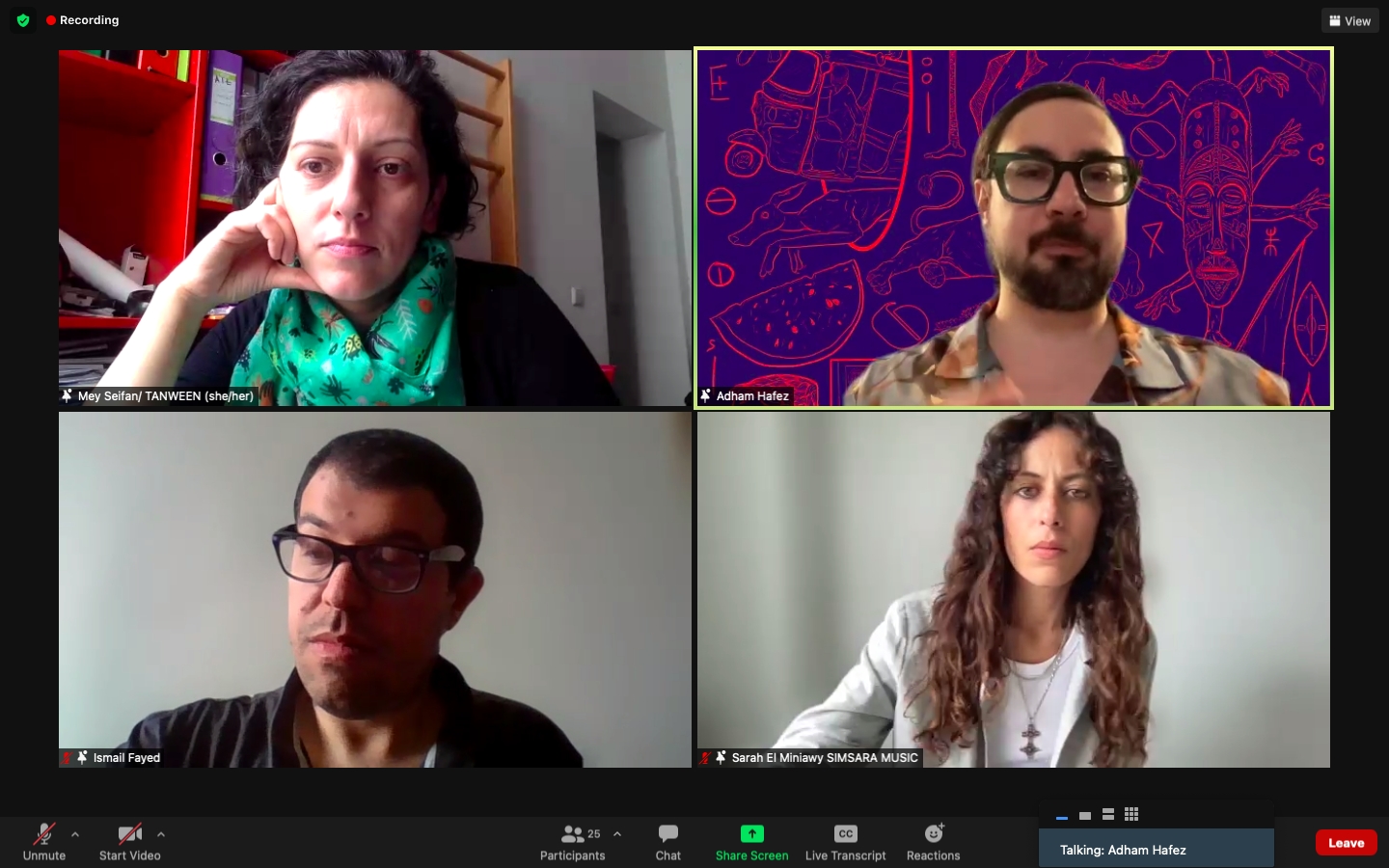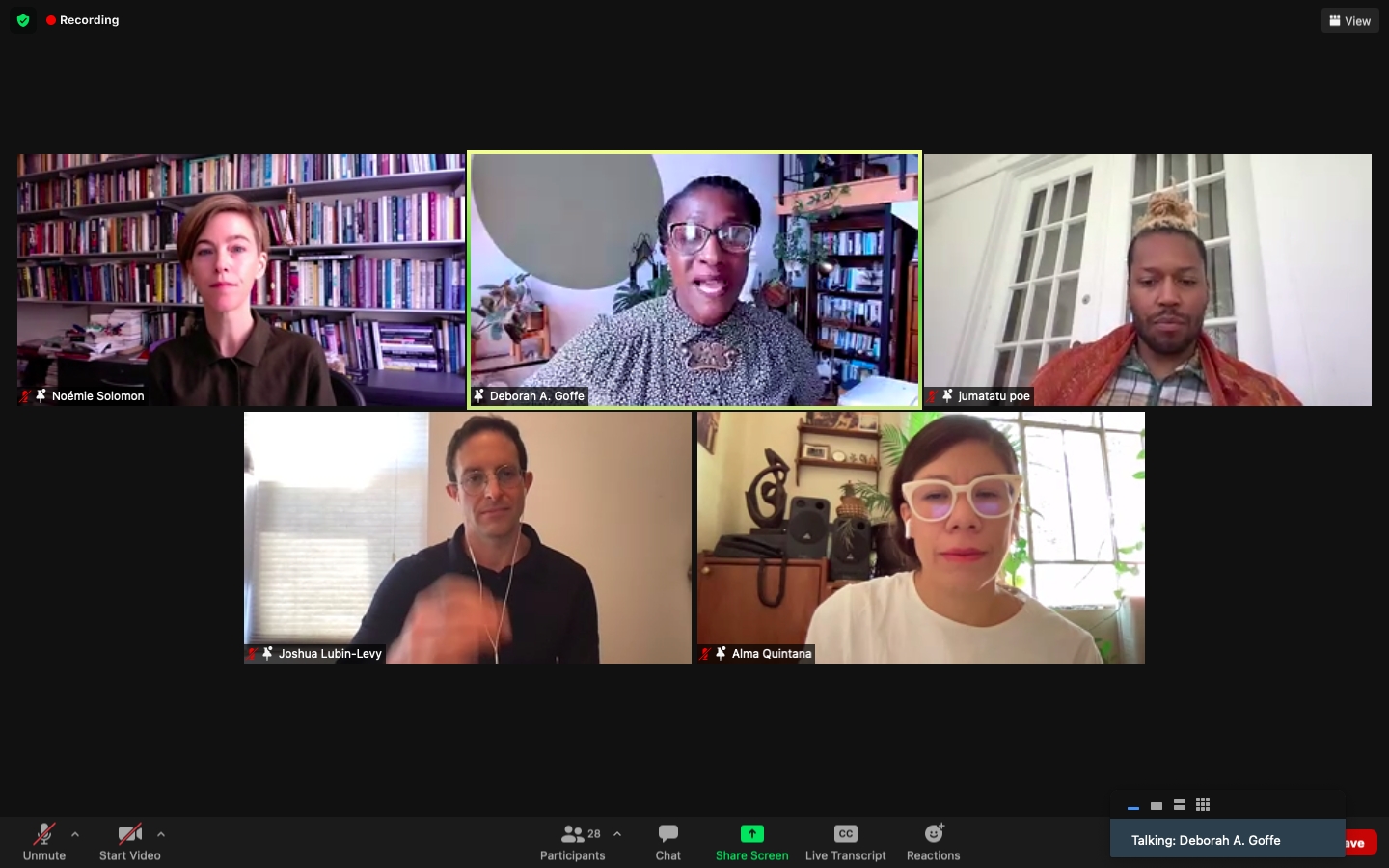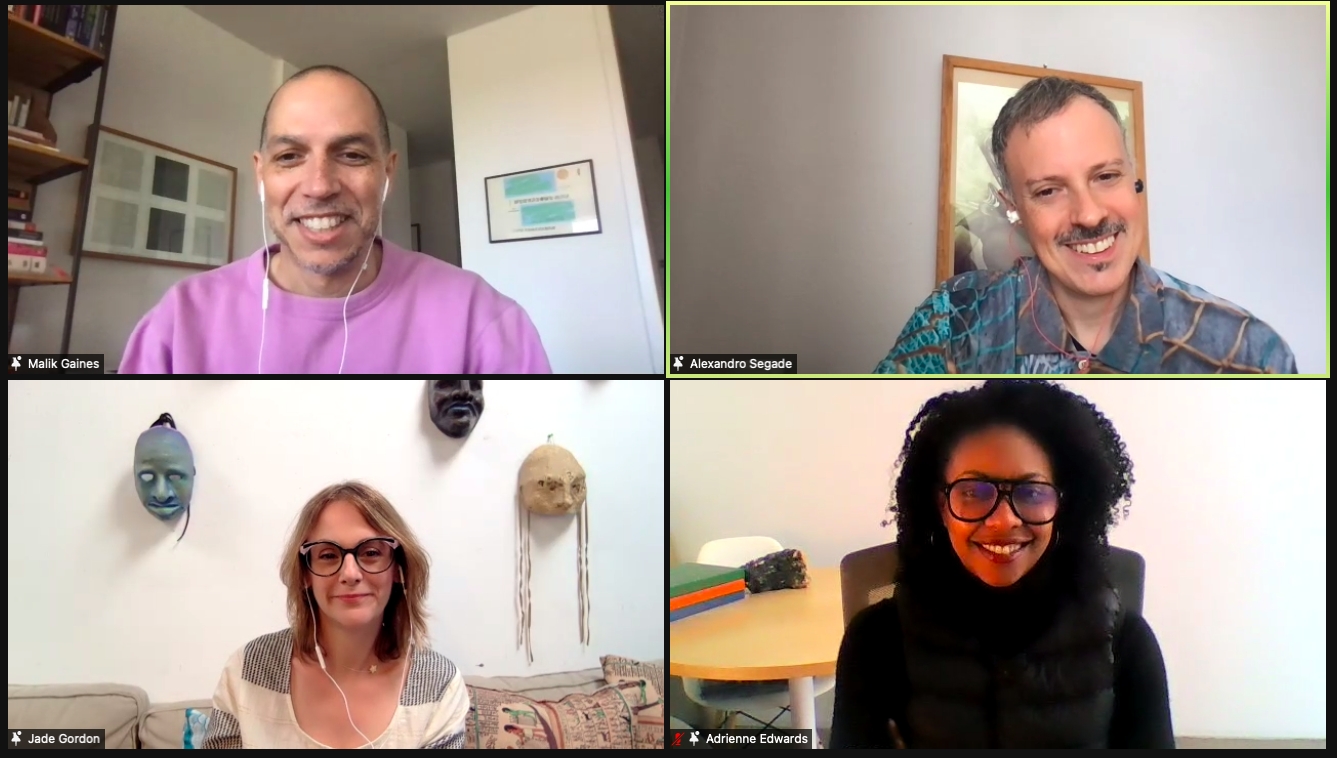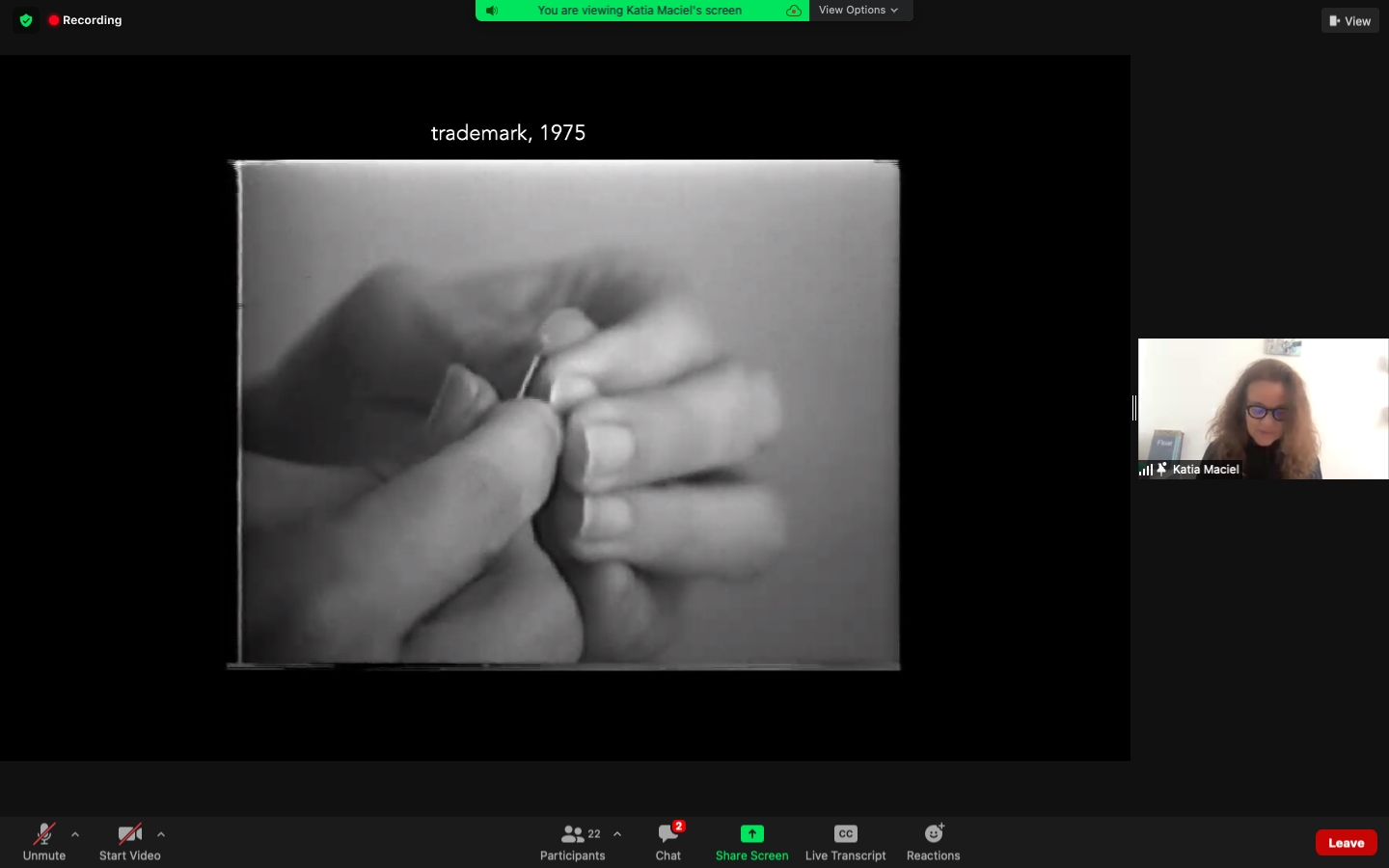A curator was once used in reference to “a guardian; one who has care or superintendence of something,” later evolving to “a parish priest,” and finally reaching its contemporary meaning in the 1600s to mean “a person who selects items, performances, or performers for a program.” Throughout this phenomenological progression however, the word has maintained a sense of power and prestige.

Curating and Gatekeeping panel from left to right; May Seifan, Adham Hafez, Sarah El Miniawy and Ismail Fayed
During NYU Performance Studies’ 6th Annual Curating Symposium we deconstructed and reevaluated some of these notions. Learning from visiting artists, curators, and other NYU departments, we explored aspects of curation that promote trans-disciplinary exchanges “to meet the rapidly changing practical, critical, and theoretical challenges associated with this work.”
Following a brief welcome by Professor Andre Lepecki, the symposium was kicked off with a riveting panel entitled, “Curating and Gatekeeping.” PhD candidate, Adham Hafez, moderated the panel joined by Ismail Fayed, Sarah El Miniawy, and Mey Seifan. The panel focused on the curation of Arab artists and tackled challenges that are presented in the context of contemporary art’s infrastructure. The conversation addressed concepts like canons, fetishism, migration, culture policy, and the need for advancement in entrepreneurial and economic systems, lending itself to a beautiful dialogue on the fixed identities many Arab artists are forced into today.

The Institute for Curatorial Practice in Performance: Nestings: Experimental Infrastructures for Performance panel from left to right; Noémie Solomon, Deborah Goffe, jumatutu poe, Alma Quintana and Joshua Lubin-Levy
Upon concluding this important panel, our focus shifted into “the Institute for Curatorial Practice in Performance: Nestings: Experimental Infrastructures for Performance'' featuring Deborah Goffe, Noémie Solomon, Joshua Lubin-Levy, jumatutu poe, and Alma Quintana.” This session supplemented the previous panel by looking at infrastructures and reciprocal relations intended to promote healthy dialogue between collaborators.

My Barbarian panel from left to right; Malik Gaines, Alexandro Segade, Adrienne Edwards and Jade Gordon
The generative conversation set up the ideal setting to learn from artists actualizing these ideas in the third panel of the day entitled My Barbarian & Adrienne Edwards. In conversation with the cast of My Barbarian Malik Gaines, Jade Gordon, and Alexandro Segade along with its curator, Adrienne Edwards imagined and played with performance as an entry point toward grappling with historicity and imagining what community can look like.

“In the Skin of Things: Letícia Parente’s First Video” with Katia Maciel.
As I marinate in the intellectual inquiry of the day, I can’t think of a more appropriate finish than our final panel, “In the Skin of Things: Letícia Parente’s First Video” with Katia Maciel. Led by Letícia Parente, the event detailed her participation in a videoart piece entitled “Trademark” (1975) which in its wake would inspire a long legacy of Brazilian videoart. In the piece, the artist sews the words “Made in Brasil” on the sole of her foot, making a radical statement and parallel between the body and politics of the Brazilian military dictatorship from 1964 to 1985. Though the video has since been lost in material form, it exists through the memory of the artist’s close family members and is being reconstructed by researcher and artist, Katia Maciel to comment on the “social, political, and cultural determinations from 1960s and 1970s Brazil that persists until today.”
Drawing on each of these I cannot help but feel optimistic toward the future of curation. Once intended to mean a guardian and then a priest, a curator is above all a protector of the arts, not a gatekeeper of them. As I revisit Professor Lepecki’s opening remarks and consider each of the day’s panels I find one commonality persists throughout. Change is imminent and radical inquiry is a necessity for any path forward. I feel thankful to be surrounded by artists, curators, and thinkers who share in this aim and look forward to the horizon as we draft, dream, and rewrite-together.
Story by Leila Mire.